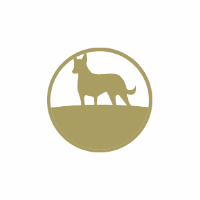By Dr. Emma Bradbury, canine nutrition specialist at Ridley
As we approach the warmest part of the year, I’m often asked questions as to how people can keep their working dogs in peak condition throughout the season.
Do they have increased energy requirements?
- Working dogs with high work rates will require a higher food intake, therefore energy requirements are dependent on how much the dog is working.
- Dogs should be fed after working to help promote recovery and replenishment of energy and protein sources. Feeding before exercise can cause stomach torsion and vomiting.
- Working dogs require a high fat, high protein diet. The high protein component is to reduce exercise induced injuries and the high fat is to increase endurance.
- Fat is an efficient energy source that is slow releasing.
How can heat stress affect their performance?
- With high temperatures and humidity, strenuous physical activity will have a negative effect on the performance of the animal and greatly increase the animal’s chances of suffering from heat stress/heat stroke.
- Dogs will underperform and be reluctant to work or will have a delayed return when out mustering.
- May ignore commands, lay down and seek shade.
- Be aware of surface temperatures on extremely hot days. Dogs are lower to the ground and may be experiencing higher temperatures than us. Also, concreted holding yards, potentially could burn or damage their paws.

What should a healthy dog’s temperature be?
Internal temperatures average between 38.3-39.2oC.
- If your dog is experiencing mild heat stress their temperature will be between 39.2 oC – 40oC, moderate heat exhaustion 40oC – 41oC and severe heat stroke above 41o
- These are approximates, they cannot be used to define or predict heat stress. These numbers will vary based on individual dogs, varied conditions and health status of the dog but if you are at all concerned you should immediately consult your veterinarian.
What changes do owners need to make during this time?
- To prevent heat stroke/stress, ensure dogs have access to cool clean drinking water. During hot days and high workloads, dogs can require as much as 70ml/kg of bodyweight.
- Never leave your dog out in the sun or your vehicle.
- Allow regular rest and / or swim breaks, especially when the temperature or humidity is high.
- Ensure that dogs are eating their food, and feed during cooler periods of the day. During periods of hot weather dog’s appetites can diminish, therefore it’s important that the food is palatable/enticing for the dogs to eat.
- Do not work your dog out in extreme temperatures or the hottest part of the day. If possible, try to muster/work first thing in the morning.
- Clip long haired dogs in the summer months.
Signs to look out for if your dog is suffering?
- Dogs affected by heat stroke will require immediate veterinary attention.
- Dogs have a small number of sweat glands, which are predominantly in the paw pads. Therefore, excessively wet paw pads can be an indication of heat stress.
- Signs to look out for are rapid panting, reluctance to move or work, they will become weak or lethargic and may have difficulty breathing. Signs can then become extreme to drooling excessively, possible vomiting and dizziness or disorientation.
- Immediate first aid for heat stroke involves, wetting the dog completely with cool (not iced) water, ensuring the dog is placed in a shady place and has plenty of good quality drinking water. Allow the dog to drink water at its own leisure until the veterinarian arrives.
To minimise the likelihood of your dogs being prone to the effects of Australia’s harsh summer conditions, ensure that they consume a complete and balanced diet after working each day. Cobber® Working Dog with Diamond V® is the only working dog food containing a unique prebiotic that aids in the recovery of working dogs by assisting nutrient digestibility and promoting muscle repair.
Although many dogs may want to keep going, day in, day out, it’s always a good idea to monitor their behaviour and physical condition and if you’re at all concerned with any abnormal changes, consult your veterinarian immediately.

